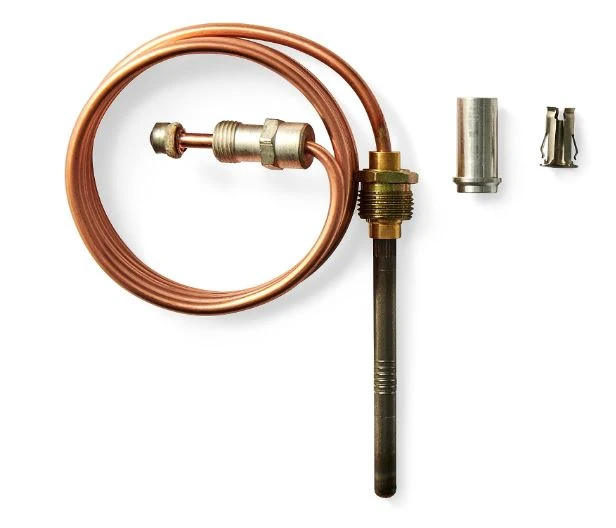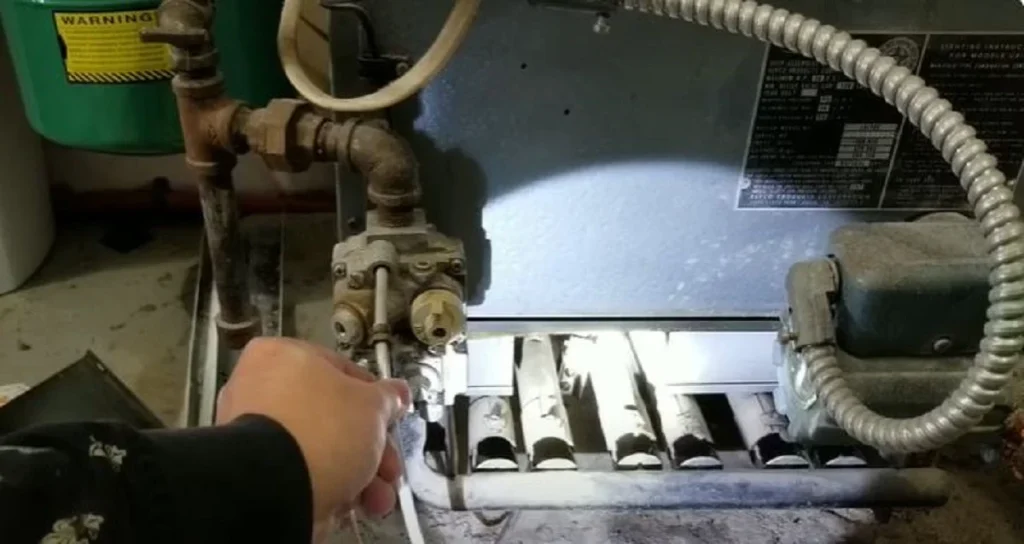Gas Furnace Thermocouple is Bad! Symptoms, Cause, and Replacement
Note: This article may contain affiliate links, which means if you make a purchase following our links won’t cost you extra, but we may earn a commission. Learn more
Gas furnace thermocouple issues can manifest as bad signs, cause malfunction, and may necessitate replacement. Recognizing these signs and understanding the causes can help in timely and effective replacement.
A thermocouple in a gas furnace is a safety device that shuts off the gas if the pilot light goes out. It does this by generating a small electric current when heated by the pilot flame. Over time, thermocouples can develop problems, leading to furnace malfunctions.
Common symptoms of a bad thermocouple include the furnace not staying lit, the pilot light going out, or the furnace not starting at all. The causes for thermocouple failure can range from dirt and debris affecting its function, to wear and tear over time.
The lifespan of a thermocouple generally varies, but it can last several years under normal conditions. When a replacement is needed, it’s essential to choose the right type for your furnace. The cost to replace a thermocouple on a furnace can vary, but it is generally an affordable component.
When replacing a thermocouple, the first step involves disconnecting the power to ensure safety. Signs that a thermocouple is failing or has failed include a weak pilot light, discoloration, cracks, or pinholes on the thermocouple tube. It’s crucial to choose a replacement that matches the size and style of the existing one for proper function.
Attempting to repair or replace a thermocouple on your own can be challenging. It’s essential to properly turn off the gas valve and power the furnace. If unsure, consulting with a professional is advised for safe and effective replacement.
Thermocouple Essentials in Gas Furnaces
A thermocouple is an essential component in gas furnaces, acting as a safety device. It’s composed of two different metals that create a small electrical current when heated. This current keeps the gas valve open while the pilot light is lit.
In a gas furnace, the thermocouple is positioned near the pilot light. As the pilot light heats the thermocouple, it generates electricity, signaling the gas valve to stay open.
If the pilot light goes out, the thermocouple cools down, stopping the electric current and closing the gas valve to prevent gas leaks. This simple yet effective mechanism is crucial for the safe operation of gas furnaces.
What Does a Dirty Thermocouple Look Like?
A dirty thermocouple can hinder the furnace’s functionality. Typically, a clean thermocouple has a shiny metallic surface.
In contrast, a dirty one might appear dull, coated with soot or corrosion. These deposits can insulate the thermocouple, impeding its ability to sense heat accurately from the pilot light.
This inefficiency can lead to the furnace shutting off prematurely or failing to start.
Bad Thermocouple Symptoms
Pilot Light Issues: Difficulty in keeping the pilot light lit or frequent extinguishing can indicate a faulty thermocouple.
Furnace Shutting Down: The furnace turning off unexpectedly or failing to start is a common symptom of thermocouple problems.
Inadequate Heating: If the furnace is not heating efficiently, it could be due to a malfunctioning thermocouple.

What Causes a Thermocouple to Go Bad?
Age and Wear: Over time, thermocouples can wear out and become less effective, requiring replacement.
Dirt and Debris: Accumulation of dirt and soot can insulate the thermocouple, affecting its functionality.
Corrosion: Exposure to moisture and chemicals can lead to corrosion, impairing the thermocouple’s performance.
Cleaning a Thermocouple: Yes or No?
Cleaning a thermocouple can sometimes restore its functionality. If the thermocouple is coated with soot or minor corrosion, gentle cleaning with fine sandpaper or steel wool can remove the debris, improving its performance.
However, care should be taken not to damage the thermocouple. If cleaning doesn’t solve the issue, replacement is the next step.
Selecting the Right Thermocouple for Furnace
Choosing the right thermocouple for your gas furnace is crucial. Ensure the new thermocouple matches the type and size of the old one.
Before starting the replacement, turn off the gas and power to the furnace for safety.

Our Recommendation- Resideo CQ100A1005 Replacement Thermocouple
The process involves removing the old thermocouple and installing the new one in its exact position, ensuring it’s securely attached and aligned with the pilot light.
Replacing Thermocouple on Furnace Properly
Replacing a thermocouple on a furnace is a critical task for maintaining the safety and efficiency of your heating system. This process involves several steps to ensure the thermocouple is replaced correctly and the furnace operates safely.
Preparation and Safety Measures
Step 1: Turn Off the Furnace
- Ensure the furnace is completely turned off, including the gas supply and electrical power, to avoid any accidents.
Step 2: Locate the Thermocouple
- Identify where the thermocouple is located, typically near the pilot light, and inspect it for any visible damage or wear.
Removal of the Old Thermocouple
Step 3: Remove the Old Thermocouple
- Carefully disconnect the thermocouple from the gas valve and the bracket holding it in place. This might require unscrewing or gently pulling, depending on the furnace model.
Installation of the New Thermocouple
Step 4: Position the New Thermocouple
- Place the new thermocouple in the same position as the old one, ensuring it is properly aligned with the pilot flame.
Step 5: Secure the Thermocouple
- Attach the thermocouple to the gas valve and the bracket, ensuring it is secure but not overly tight to avoid damage.
Testing and Final Checks
Step 6: Test the Furnace
- Turn on the power and gas supply to the furnace and ignite the pilot light. Observe if the pilot light stays lit and if the furnace operates without issues.
Step 7: Observe Safety Precautions
- Monitor the furnace for a short period to ensure there are no gas leaks or other issues. If unsure about any steps or if the furnace doesn’t work correctly, consult a professional for assistance.

Common Thermocouple Problems
Faulty Readings
Sometimes, a thermocouple might give incorrect readings, leading to unnecessary furnace shutdowns.
Loose Connections
A thermocouple not properly connected to the gas valve can fail to function.
Physical Damage
Bends or breaks in the thermocouple can prevent it from working correctly.
Read Also: Heater Smells Like Burning! What to Do?
To see our latest posts Click Here